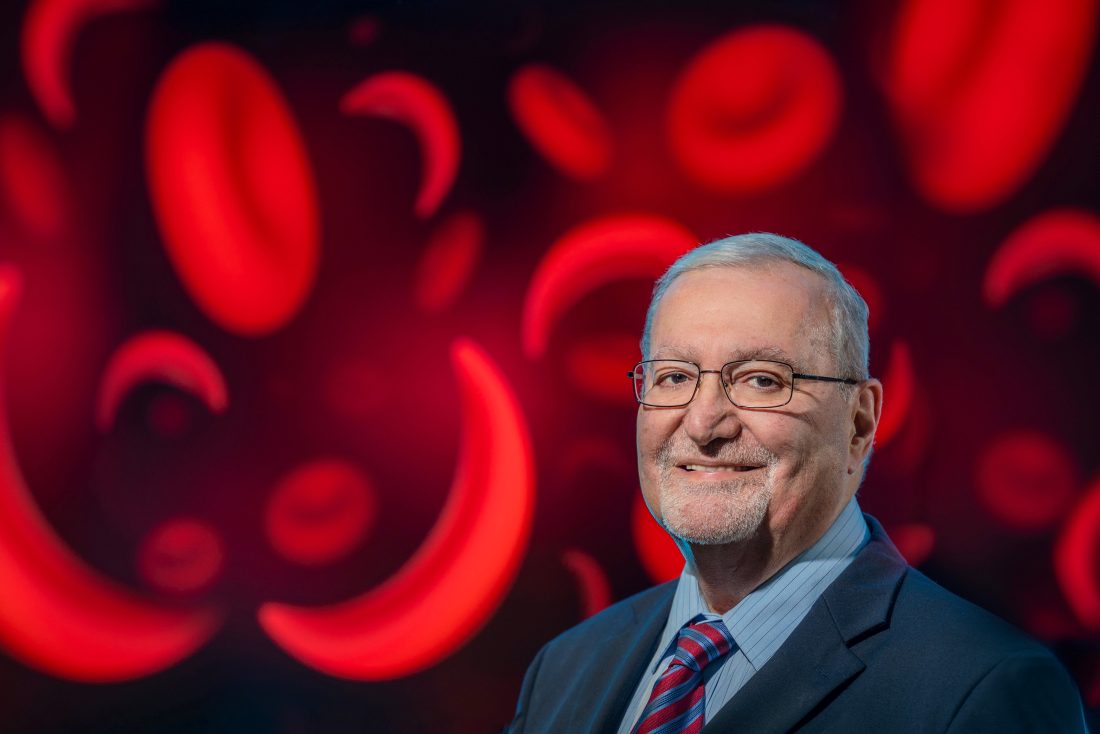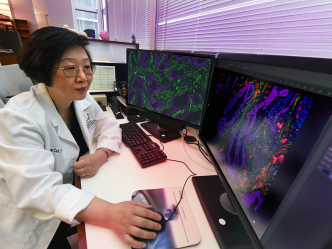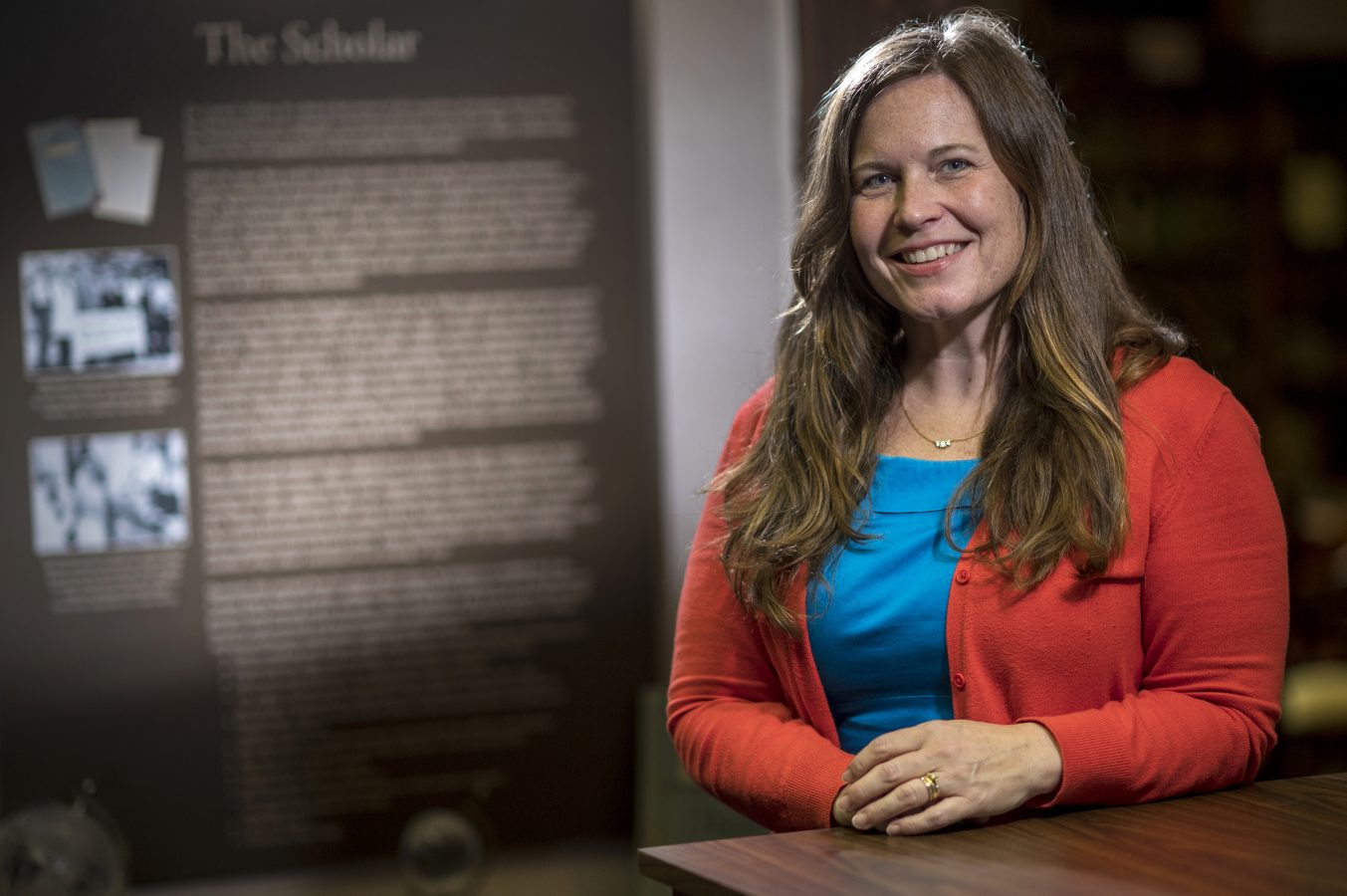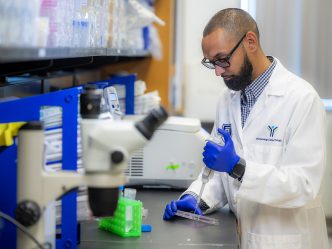A class of drugs used for their ability to stop tumor cells from dividing is now under study for their potential to reduce the pain and damage caused by sickle cell disease, investigators report.
The drugs are called HDAC inhibitors, and the investigators have early evidence one called panobinostat can reactivate after birth the gene that produces fetal hemoglobin, which cannot sickle, says Abdullah Kutlar, MD, director of the Center for Blood Disorders at the Medical College of Georgia and Augusta University Health.
Hemoglobin is the oxygen-carrying component of red blood cells, and with sickle cell disease it’s inefficient at this fundamental role. Potentially devastating consequences include frequent pain attacks from blockages particularly in small blood vessels produced by the also oddly shaped, sticky red blood cells. Many patients experience a rapid breakdown, or hemolysis, of their red blood cells. Anemia, damage to major organs and a shortened life expectancy can result.
Histone deacetylases, or HDACs, are enzymes that are among the many ways gene expression gets turned down, a natural process for some genes, like the gamma-globin gene that makes fetal hemoglobin, as we move from childhood to adulthood.
Fetal hemoglobin enables a developing baby to capture oxygen from mother’s blood while the beta-globin gene produces adult hemoglobin that carries oxygen. Within the first few months after birth, most babies have little to no fetal hemoglobin.
Kutlar and Betty Pace, MD, Francis J. Tedesco Distinguished Chair of Pediatric Hematology and Oncology and a sickle cell researcher, are co-principal investigators on a new three-year, $2.3 million grant (R33HL162681-01) from the National Heart, Lung and Blood Institute, funding an early stage clinical trial to see if the HDAC inhibitor panobinostat can turn that fetal hemoglobin gene back on in adults to directly address the fundamental problem of inefficient oxygen delivery.
“HDAC inhibitors are drugs known to change the expression of certain genes,” says Kutlar. “When you inhibit the histone deacetylases, what you do is enable some of the genes that have been shut down by certain mechanisms to get expressed again. That is important for sickle cell because we know in adults that the fetal hemoglobin gene is shut down and we know fetal hemoglobin works very well as a disease modifier.”
Two HDACs are involved in silencing the fetal hemoglobin gene and panobinostat is a pan-HDAC inhibitor, which means it silences more than one HDAC.
Hydroxyurea, the first sickle cell drug approved by the U.S. Food and Drug Administration back in 1998, also increases fetal hemoglobin, although precisely how remains unclear, and it’s also used for some cancers. Kutlar notes that if panobinostat continues to show promise, his next steps will include pairing the two fetal hemoglobin promoters to see if there is beneficial synergy.
For now, the phase 1 trial he is leading will explore panobinostat’s safety and efficacy in 18 patients taking either 15 or 20 milligrams several times per week. The investigators will be monitoring study participants’ levels of the non-sickling fetal hemoglobin as well as levels of F-cells, a subpopulation of red blood cells that contain fetal hemoglobin. Kutlar notes that the higher dose has been used in other disease states and well tolerated by patients. But at still higher rates, side effects like diarrhea, nausea and fatigue become problematic.
The investigators will also be working with study participants to develop better ways to ensure they are taking their medication as they should now and in the future. And they will be looking for indicators that the treatment is a good choice for an individual patient. This includes looking at what happens to non-histone proteins like NFkB, a regulator of our innate immunity, and p53, a protein inside cells key to controlling their division and death. Histones are proteins which comprise the spool our DNA wraps tightly around, which also are important to gene regulation.
The investigators have early evidence that the drug, which is taken in pill form, should directly target the hemoglobin problem in sickle cell disease. Pace has shown panobinostat increases fetal hemoglobin expression both in red blood cells in culture and in mouse models of sickle cell disease by enabling reactivation of the fetal hemoglobin gene. An early, small trial by Kutlar indicated a slight increase in fetal hemoglobin levels by giving 10 milligrams of the drug to patients and it was well tolerated.
For this study in humans with sickle cell disease, he will be looking at the drug in patients who are not taking hydroxyurea, to ensure that enhancement in fetal hemoglobin results from the newer drug. He notes most study participants likely will come from some 120 patients he currently has at the Center for Blood Disorders, who have opted not to take hydroxyurea.
Results of the Multicenter Study of Hydroxyurea in Sickle Cell Anemia published in the Journal of the American Medical Association in 2003, indicated the use of hydroxyurea, the only drug approved at the time, reduced mortality as it reduced pain crises and increased fetal hemoglobin.
But concern about reported side effects from long-term use like decreased infertility in males and increased risk of skin cancer and leukemia as well as weight gain has some patients refusing to use the drug, Kutlar and his colleagues report, so more treatment options are needed.
Kutlar says the possibilities of this additional therapy are exciting. “It’s not going to be a cure for sickle cell disease but it’s going to be a significant disease modifier, which will let these patients survive longer without so much organ damage and hopefully without so much pain,” he says.
Other treatment options include bone marrow transplants, which are considered curative for sickle cell disease, and gene therapies are another exciting option under study, including use of gene editing techniques like CRISPR to increase fetal hemoglobin expression or repair the condition’s genetic cause, Kutlar says. While these approaches also hold promise, more medications are still needed because it likely will be many years, if ever, before sophisticated techniques like these are widely available where concentrations of the sickle cell disease are most significant like Africa or India, Kutlar says. Also, every drug doesn’t work for every patient.
The other three drugs currently approved by the FDA for sickle cell disease include L-glutamine (Endari), which helps protect red blood cells from damage, and was approved in 2017. The monoclonal antibody crizanlizumab (Adakevo), which helps prevent the red blood cells from sticking to blood vessel walls, and voxelotor (Oxbryta), which helps prevent their sickling which makes it easier for the cells to carry oxygen and slows their breakdown, were both approved in 2019.
MCG was a study center for hydroxyurea and the largest enroller for participants in the crizanlizumab studies. For more information about the new study of panobinostat call the Center for Blood Disorders at 706-721-2171 and ask for lead research coordinator and nurse clinician LaTanya Bowman or Kutlar.
Panobinostat (Farydak) has been used in this country and is still used in Europe for multiple myeloma, and has been studied as a possible cure for HIV infection, so there is already significant experience in humans.
Kutlar notes that there are some adults with naturally high fetal hemoglobin levels who are sickle cell resistant as a result, more evidence that drugs which increase those levels are beneficial.
MCG, AU Medical Center and Children’s Hospital of Georgia follow about 1,500 adult and pediatric patients with sickle cell disease.
The genetic disorder affects about 100,000 people in the US, according to the Centers for Disease Control and Prevention, and occurs mainly in individuals whose ancestors came from sub-Saharan Africa; Spanish-speaking regions in the Western Hemisphere, including South and Central America and the Caribbean; Saudi Arabia; India; and Mediterranean countries like Turkey and Greece. Closer to home, about 150 babies are born in Georgia each year with sickle cell disease, about 3,000 are born nationwide.
 Augusta University
Augusta University





